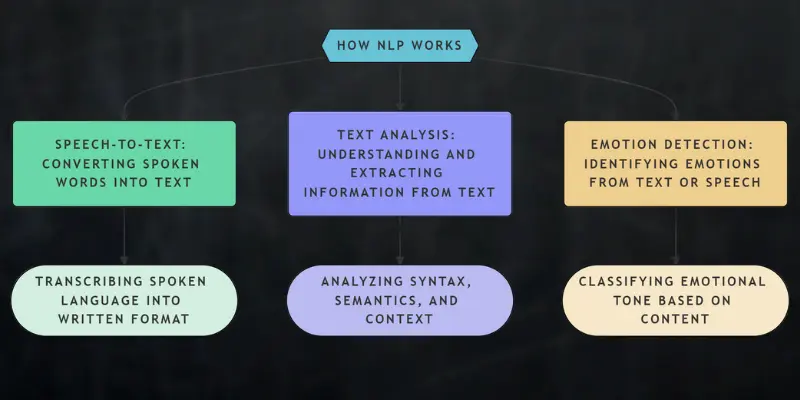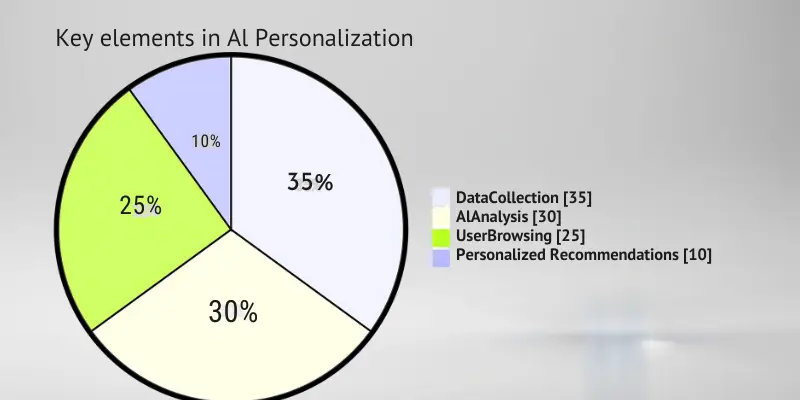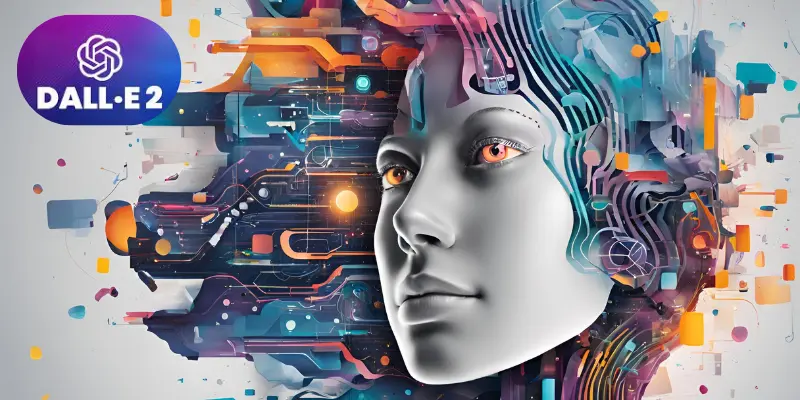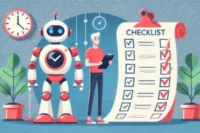The Future of AI Tools: Trends You Should Watch
Published: 01 Jan 2025

AI tools have already transformed across the world. From automating repetitive tasks to enhancing customer service, AI plays a crucial role in business efficiency. As technology evolves, the future of AI tools promises even more incredible advancements, enabling faster decision-making, improved productivity, and more personalized experiences.
Why is AI Important for the Future?
AI is becoming a big part of everyday life. It helps businesses work faster and more efficiently. For example, AI chatbots can answer customer questions anytime. As AI improves, it will make many tasks easier and help businesses grow.
Example: “AI tools are already helping businesses grow like chatbots answering customer questions quickly.”
2. Key Trends
2.1. Trend 1: Smarter AI with Natural Language Processing (NLP)

What is NLP?
NLP (natural language processing) is a field in AI that helps computers understand and respond to human language. It allows machines to read, interpret, and generate human language. For example, when you ask your phone, “What is the weather today?” NLP helps the device understand that you are asking for the weather just by saying random words.
How will NLP improve?
Soon, NLP will evolve to understand words, emotions, and their context. Imagine asking Siri to remind you about a meeting, but it also notices you’re in a rush and automatically sets a reminder with a note to speed things up. Example: In the future, when you say, “I feel stressed today,” your virtual assistant could provide you with calming music or a motivational quote based on understanding your mood.
Why is this important?
Smarter NLP means better interactions with machines. Instead of simply answering questions, AI can understand your tone, mood, and even your intentions. For example, if you ask a chatbot about a problem, it could sense you’re frustrated and offer quicker solutions, making customer service more efficient and human-like.
- NLP powers intelligent assistants like Siri, Alexa, and Google Assistant to understand your voice commands.
- It can translate languages, read emotions from text, and even summarize long documents.
- Example: Imagine you’re working on a document and NLP tools like Grammarly can help you write better by understanding your tone and the context of your sentences.
Why it matters: As NLP advances, AI will improve at “getting” us and understanding what we say and how we feel. Whether helping customers, enhancing personal assistant features, or making voice commands more natural, smarter NLP means AI will be more helpful, individual, and understanding than ever before.
2.2. Trend 2: AI in Personalization

What is personalization with AI?
AI helps customize your experience by recommending products, movies, or music based on your preferences and past behaviour.
Example: “When Netflix suggests a movie based on what you watched before, that’s AI personalizing your experience.”
How will AI improve personalization?
In the future, AI will become even better at predicting what people want, often before they realize it themselves.
Example: “Soon, websites might even know what you need before you ask for it!”
2.3. Trend 3: AI in Automation

What is AI automation?
Automation means using machines to do repetitive tasks like sorting emails or organizing files so humans don’t have to.
How will AI tools automate even more tasks?
AI will help businesses automate even more tasks, such as customer service and data entry, freeing employees to focus on more important work.
Example: “AI tools like chatbots or virtual assistants will handle simple tasks, letting employees focus on higher-value tasks.”
Why is this important?
AI saves time, reduces mistakes, and boosts productivity by automating tasks that would take humans much longer.
2.4. Trend 4: AI in Creativity and Content Creation

AI-Generated Content
AI tools are now able to create a wide range of content. These tools can write articles, design images, and even compose music. They help businesses and creators save time by automating content creation.
- AI Writing Tools: Tools like Jasper can generate blog posts, social media content, and product descriptions quickly, based on minimal input.
- AI for Art and Design: Platforms like DALL-E create images from text descriptions. You simply tell the AI what you need, and it generates the artwork.
- AI Music Creation: AI can also compose music based on specific styles or moods.
Why does this matter?
AI is transforming content creation by making it faster and more efficient. Businesses can now generate content at a much lower cost with fewer resources.
- Time-Saving: Content creation that used to take hours or even days can now be done in minutes.
- Increased Efficiency: AI helps businesses maintain a steady flow of content, essential for marketing and engaging with audiences.
- Affordable for Small Businesses: Smaller companies can now create professional content without hiring a large team of writers or designers.
Example: “AI-generated art tools like DALL-E help businesses create unique visuals, even if they don’t have a dedicated graphic design team.”
2.5. Trend 5: AI for Cybersecurity

What role will AI play in cybersecurity?
AI is revolutionizing cybersecurity. It uses advanced algorithms to detect, prevent, and respond to cyber threats much faster than traditional security methods. Machine learning models continuously analyze large amounts of data and recognize patterns to identify suspicious activity. Once a threat is detected, AI tools can immediately stop it, reducing the need for human intervention.
- Machine Learning: AI can learn from past data breaches to predict and prevent future threats.
- Real-Time Monitoring: AI tools can analyze data 24/7, offering real-time protection against cyber attacks.
- Anomaly Detection: AI can quickly spot irregular activities, such as unauthorized access or unusual network behavior, which could indicate a potential attack.
Example:
AI tools like Darktrace and CrowdStrike use machine learning algorithms to detect threats and prevent real-time data breaches. For instance, Darktrace can identify abnormal behaviors within an organization’s network and immediately neutralize the danger, even before human analysts can review it.
Why is this important?
As cyber threats become more sophisticated, traditional methods struggle to keep up. AI helps organizations stay ahead by continuously monitoring for unusual activity and responding to potential threats without human delays. Here’s why AI is essential for cybersecurity:
- Faster Response: AI can react to threats within seconds, minimizing damage and data loss.
- Reduced Human Error: AI tools automate threat detection, reducing the chances of missing a cyberattack due to human oversight.
- Cost-Effective: Automated AI tools lower the cost of security breaches by preventing financial losses and improving operational efficiency.
Key Benefits of AI in Cybersecurity
| Benefit | Explanation |
|---|---|
| Proactive Threat Detection | AI detects and blocks threats before they cause harm, providing early warning systems. |
| Faster Incident Response | AI can respond instantly, stopping attacks in real time and minimizing damage. |
| Advanced Threat Analysis | AI can analyze complex data and identify hidden patterns of threats. |
| Continuous Learning | AI systems adapt and improve by learning from past data, improving over time. |
| Reduced Costs | AI helps organizations avoid the financial and reputational costs of data breaches. |
Faqs:
AI tools are software programs that use artificial intelligence to complete tasks. They can help with tasks such as automating work, making decisions, or understanding human language. Examples include chatbots, personal assistants, and recommendation systems.
AI tools use data and algorithms to learn from patterns and make decisions. The more data they have, the wiser they get. They can analyze information and do tasks without needing a human to control every step.
Yes, most AI tools are designed to be user-friendly. They often have simple interfaces that anyone can navigate, even if you don’t have technical skills. Just follow the instructions, and you can use them efficiently.
AI tools can automate repetitive or time-consuming tasks, but they can’t fully replace humans. Instead, they help people focus on more creative and complex tasks. AI is meant to work alongside humans, not replace them.
The cost of AI tools can vary. Some tools are free or inexpensive, while others may require a subscription or one-time payment. You can start with essential tools and upgrade as needed.
Some AI tools, like chatbots or voice assistants, can recognize emotions based on tone or words. However, they still learn and may not fully understand emotions like humans. In the future, AI will improve at this.
AI tools can help businesses save time, improve efficiency, and make better decisions. They can automate tasks like customer service or marketing, allowing companies to focus on growth. Using AI can give businesses a competitive edge.
In the future, AI tools will become more intelligent, accurate, and able to handle more complex tasks. They will also better understand human behavior and make data-based predictions, making them even more helpful for businesses and individuals.
Not necessarily. Many AI tools are designed for beginners and don’t require advanced technical knowledge. You can quickly get started by following the tutorials or instructions provided by the tool.
Yes! AI tools are already being used to help with content creation, like writing articles, generating art, or composing music. They can make creative tasks faster and help you develop new ideas.
Conclusion:
So, guys, this article has covered the future of AI tools in detail. AI tools are changing how we work and live and will keep improving. I advise using these tools now to save time and do things more efficiently. The future of AI is exciting, and using these tools will help you stay ahead. Don’t wait—start using AI tools today!

- Be Respectful
- Stay Relevant
- Stay Positive
- True Feedback
- Encourage Discussion
- Avoid Spamming
- No Fake News
- Don't Copy-Paste
- No Personal Attacks

- Be Respectful
- Stay Relevant
- Stay Positive
- True Feedback
- Encourage Discussion
- Avoid Spamming
- No Fake News
- Don't Copy-Paste
- No Personal Attacks





